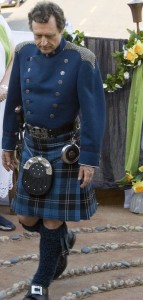Secret Garden of the Feminine
Reclaiming the Garden
How do we stop this death-wielding power machine? Is it possible to maneuver our way through the traps the machine has laid and find a new evolutionary path? How do we weave together the disparate parts of our dualistic natures? Have we learned yet that strength is not equated with conquest and domination? How do we integrate the equally necessary qualities of strength and nurturing, logic and intuition, spirit and nature, mind and matter? Can we find the balance needed at this crucial moment in the preservation and life of the planet? Is it possible for males and females of all races, religions, and economic backgrounds to join hands and discover the goddess in each of us and pour forth the healing waters of balance from the never-diminishing grail of love? Can we make of this earth the garden it once was?
Francis Hodgson Burnett’s book The Secret Garden is a brilliant tale depicting the deep healing that can take place with the retrieval of the lost feminine. Mary, the story’s vibrant heroine, confesses early on, “I’ve stolen a garden. . . It isn’t mine. It isn’t anybody’s. Nobody wants it, nobody cares for it, nobody ever goes into it.”[1] Much like the feminine in our society, which no one seems to want or care for, Mary’s garden has been abandoned and neglected. Psychologist Dr. Gloria Avrech says of this classic story, written around the beginning of the twentieth century, “The problem it depicts seems to relate to the absence, neglect and disdain of the Feminine, Great Mother, and matriarchal consciousness in the psyche and in our lives.”[2]
Mary, forced to play outside, begins to explore the grounds around the manor where she has been brought to live, and encounters a robin. “The robin, like a power animal, leads our young, wounded healer and future shaman to an enclosed garden behind a locked door. On an inner level, the wounded feminine ego, represented by Mary, can be seen as beginning to connect to nature and her instincts, which connecting process can bring about a restored connection to the Self.”[3] Mary, as shaman and healer, goes on to bring the same kind of wholeness to her cousin Colin and his father, Lord Craven, through restoration of the lost feminine.
An enclosed secret garden is a strong archetypal image found in countless legends, folklore, and myths. “A dormant garden can be a beautiful image for the potential life-giving, protective, containing, nurturing qualities of the positive aspects of the Great Mother archetype.”[4]
Like most all fairy tales and fables, this story, too, has a happy ending. Comforting the crying Mary, Lord Craven declares, “You brought us back to life, Mary. You did something I thought no one could do.”[5] The lost feminine now restored, the garden is once again open, alive, and awake. Mary poignantly sums up her journey with “If you look the right way, you can see that the whole world is a garden.”[6]
[1]. Frances Hodgson Burnett, The Secret Garden (Boston: Godine, 1987), p. 80.
[2]. Gloria Avrech, “The Secret Garden,” (an unpublished paper based on the film,1994, p. 2.
[3]. Ibid., p. 6.
[4]. Ibid., p. 11.
[5]. Agnieszka Holland, director, The Secret Garden (An American Zoetrope Production, Warner Brothers Release, 1993).
[6]. Ibid.



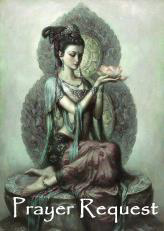
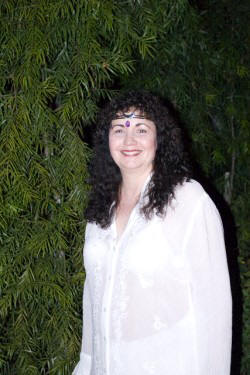 For almost two decades Rev. Xia has walked the path of the divine feminine, committed to her role as an inter-faith ambassador for the Pagan Community. Among her many articles, an essay entitled Paganism: Out of the Closet and into the Fire, originally written for her son’s school in Pasadena for a Diversity in Religion series, has been reprinted countless times. Additionally, she has written numerous mythological and ritual works centered around archetypal studies of the Goddess including Rites of Passage: A Goddess Ritual for Women, which aired on The Learning Channel–showing Pagan rites for Maiden, Mother, and Crone. She also produced and facilitated that segment for The Learning Channel. Additional articles include: Ritual and the Art of Alchemy, The Mythology of Nature, The Legacy of Creation Myths, The Myth of Matriarchy, and Secret Garden of the Feminine. She is completing a non-fiction book entitled, Feminine Alchemy: The Ritual Art of Cooking, a book of healing through Goddess archetypes which has been on the back burner for many years.
For almost two decades Rev. Xia has walked the path of the divine feminine, committed to her role as an inter-faith ambassador for the Pagan Community. Among her many articles, an essay entitled Paganism: Out of the Closet and into the Fire, originally written for her son’s school in Pasadena for a Diversity in Religion series, has been reprinted countless times. Additionally, she has written numerous mythological and ritual works centered around archetypal studies of the Goddess including Rites of Passage: A Goddess Ritual for Women, which aired on The Learning Channel–showing Pagan rites for Maiden, Mother, and Crone. She also produced and facilitated that segment for The Learning Channel. Additional articles include: Ritual and the Art of Alchemy, The Mythology of Nature, The Legacy of Creation Myths, The Myth of Matriarchy, and Secret Garden of the Feminine. She is completing a non-fiction book entitled, Feminine Alchemy: The Ritual Art of Cooking, a book of healing through Goddess archetypes which has been on the back burner for many years. My specific Priestess Path I wish to dedicate myself to is sacred circles. This means that my truest spiritual ecstasy comes from ritual in community with others. This is a large circle that includes not only planning and performing ritual, but also creating ritual art such as building altars, teaching ritual, making video…
My specific Priestess Path I wish to dedicate myself to is sacred circles. This means that my truest spiritual ecstasy comes from ritual in community with others. This is a large circle that includes not only planning and performing ritual, but also creating ritual art such as building altars, teaching ritual, making video…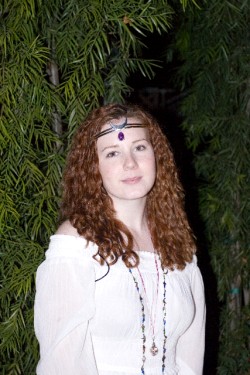 Marcella, our youngest priestess, has been a professional actor for many years. She is a graduate of the Los Angeles County High School for the Arts. Other training includes Viewpoints/Suzuki with Anthony Byrnes, Voice-Over Workshops with Sharon Mack, and the Royal Academy of Dramatic Arts in London, a Shakespeare Intensive. Her theater credits include The Cherry Orchard, A Midsummer Night’s Dream, and The Wizard of Oz. Her film credits include, Punch-Drunk Love, A Host of Trouble, and Kids in America. She has co-starred on various television shows, such as NCIS, Boston Legal, The O’Keefe’s, and Malcolm in the Middle. Awards encompass 1st Place in the 2005 and 2006 DTASC Shakespeare Competition / monologue, 1st Place 2005 RoleAbout / Cold Reading, 1st Place 2005 RoleAbout / Classical Monologue, and was the Silver Medalist ROP Outstanding Student in TV/Film.
Marcella, our youngest priestess, has been a professional actor for many years. She is a graduate of the Los Angeles County High School for the Arts. Other training includes Viewpoints/Suzuki with Anthony Byrnes, Voice-Over Workshops with Sharon Mack, and the Royal Academy of Dramatic Arts in London, a Shakespeare Intensive. Her theater credits include The Cherry Orchard, A Midsummer Night’s Dream, and The Wizard of Oz. Her film credits include, Punch-Drunk Love, A Host of Trouble, and Kids in America. She has co-starred on various television shows, such as NCIS, Boston Legal, The O’Keefe’s, and Malcolm in the Middle. Awards encompass 1st Place in the 2005 and 2006 DTASC Shakespeare Competition / monologue, 1st Place 2005 RoleAbout / Cold Reading, 1st Place 2005 RoleAbout / Classical Monologue, and was the Silver Medalist ROP Outstanding Student in TV/Film.
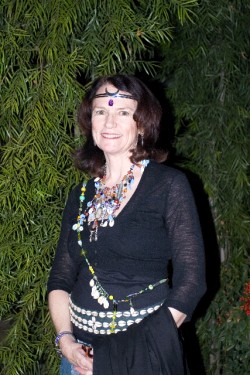 I have been following the path of the goddess for over 30 years. As an artist, I have always been interested in the mutual influence between the personal and political, private and communal, spiritual and artistic expression.
I have been following the path of the goddess for over 30 years. As an artist, I have always been interested in the mutual influence between the personal and political, private and communal, spiritual and artistic expression.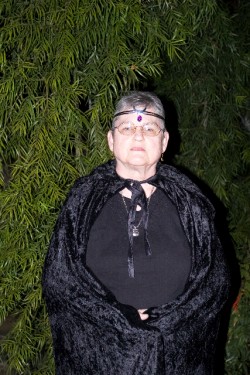 God was strictly male in the forties. And the males in my life were minor demi-gods to be obeyed without question. Father, priests, especially Monsignor, policemen, doctors–they protected me, taught me, molded me. My teachers (grade and high school) were Catholic nuns, but they were under the supervision and control of the priesthood.
God was strictly male in the forties. And the males in my life were minor demi-gods to be obeyed without question. Father, priests, especially Monsignor, policemen, doctors–they protected me, taught me, molded me. My teachers (grade and high school) were Catholic nuns, but they were under the supervision and control of the priesthood.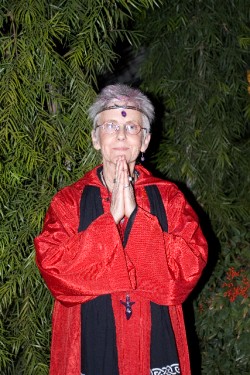 Introduction—the beginning February, 1986
Introduction—the beginning February, 1986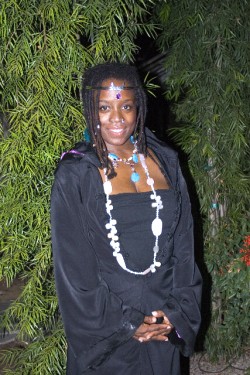 Haize Rosen has worked professionally as an actress, dancer and choreographer for 20 years. Haize is also an energy-light worker, certified in Thai massage and Hellerwork. To complement her work in the healing arts, Haize is a certified assistant mid-wife, and has a thriving doula practice. As a dancer, Haize has studied Balinese, The Orishas of both Africa and Brazil, and Classical Indian Dance in the style of Odissi. She has choreographed such renowned musicals as Guys and Dolls, Fiddler on the Roof, Little Shop of Horrors, and Grease. Haize recently wrote and starred in her one-woman shop, Country Colored Girl, which chronicled her family history in a small town in Alabama. She has studied ballet with Joy Finch, and acting at Lee Strausberg. Haize has worked rehabbing children at Juvenile Hall and taught theater and dance professionally in workshops throughout Los Angeles. The ordination onto her Priestess path in Temple of the Goddess is a culmination of her life’s work and provides an opportunity for Haize to apply her knowledge and skills in new and effective ways in the world.
Haize Rosen has worked professionally as an actress, dancer and choreographer for 20 years. Haize is also an energy-light worker, certified in Thai massage and Hellerwork. To complement her work in the healing arts, Haize is a certified assistant mid-wife, and has a thriving doula practice. As a dancer, Haize has studied Balinese, The Orishas of both Africa and Brazil, and Classical Indian Dance in the style of Odissi. She has choreographed such renowned musicals as Guys and Dolls, Fiddler on the Roof, Little Shop of Horrors, and Grease. Haize recently wrote and starred in her one-woman shop, Country Colored Girl, which chronicled her family history in a small town in Alabama. She has studied ballet with Joy Finch, and acting at Lee Strausberg. Haize has worked rehabbing children at Juvenile Hall and taught theater and dance professionally in workshops throughout Los Angeles. The ordination onto her Priestess path in Temple of the Goddess is a culmination of her life’s work and provides an opportunity for Haize to apply her knowledge and skills in new and effective ways in the world. 

